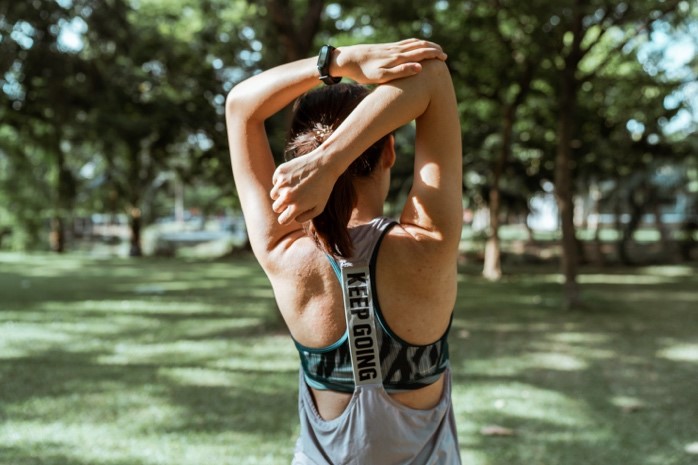Make an Appointment
Struggling with knee pain? Is it making everyday activities frustrating and unbearable? You might just have patellar tracking disorder.
We’re here to help you understand what patellar tracking disorder is, preventative measures you can take, and how to fix patellar tracking disorder with specific exercises.
What is patellar tracking disorder?
Patellar tracking disorder is a painful knee condition caused by muscular imbalances around the tendons of the knee joint causing the patella (kneecap) to shift out of place or move abnormally.
![]()
Image Source: https://www.bodyheal.com.au/blogs/sports-injuries/patellar-tracking-disorder-causes-symptoms-treatment-options
The condition is also known as “runner’s knee” and it’s affected by issues in the quads and patellar tendons.
You may have patellar tracking disorder if you notice:
- A dull ache under or near the kneecap.
- A popping, grinding, slipping, or catching feeling in your kneecap when you bend or straighten your knee.
- Knee swelling
- Knees that buckle, failing to support your body weight.
How to Prevent Patellar Tracking Disorder
Especially if you’re an athlete like a runner or gymnast, you may be worried about developing patellar tracking disorder. To prevent knee issues from arising, there are a few things you can do:
- Strengthen your quads, glutes, and hips
- Stretch before and after exercise
- Invest in proper footwear
- Maintain a healthy weight
- Physiotherapy
How to Treat Patellar Tracking Disorder
The first question is, can patellar tracking disorder be cured? Well, the answer isn’t so straightforward.
While the definition of patellar tracking disorder asserts that when your kneecap isn’t moving properly, it causes pain and discomfort, in reality**, there’s actually not a “correct” way for your kneecap to move.**
So, what does this tell us? Basically, the problem isn’t usually your knee itself. Patellar tracking disorder is more likely associated with issues elsewhere in the kinetic chain – up or down your leg in your quads, hips, or ankle.
Therefore, patellar tracking disorder treatment often means physiotherapy in these areas, instead of working directly with your knee joint.
How to Manage Patellar Tracking Disorder
When it comes to managing your patellar tracking disorder, it’s important to work with your body as a whole. After all, everything is connected and working on strength, mobility, and control in all areas is a smart way to manage the disorder.
As for the pain associated with it, there are at-home treatments you can do when flare-ups occur:
- Take a rest from the activities that cause excess pain in your knees.
- Ice your knees in 20-minute increments for 2 to 3 days.
- Take anti-inflammatory medication.
- Use a knee brace, compression sleeve, or kinesiology tape.
- Stretch and practice safe self-myofascial massage (foam rolling) to release any tension.
What exercises can help patellar tracking disorder?
Try these patellar tracking disorder exercise ideas and find pain relief for your knees.
Foam Rolling IT Bands
- Lie sideways on the foam roller as it rests on your outer left hip.
- Straighten your left leg and bend your right leg, placing your right foot on the ground in front of you for stability.
- Lean into your left arm with your left hand on the ground on the other side of the foam roller.
- Slowly roll the foam roller toward your knee, but don’t roll over your knee joint.
- Reverse the motion, stopping for about 20 seconds at a time when you feel a tight spot.
- Continue for 60 seconds and repeat on the other leg.
![]()
Quad Contractions
- Sit on the floor with one leg straight and the other bent with your foot flat on the ground.
- Roll up a small towel and place it underneath the knee of the straight leg.
- Flexing your toes, engage your quad and press the back of your knee into the towel.
- Hold for 5 seconds, release for 5 to 10 seconds.
- Repeat 10 to 12 times, then switch legs.
![]()
Prone Straight Leg Raises
- Lie on your back with one leg bent, its foot flat on the ground and the other leg straight.
- Engage your abs so that your lower back is flat on the ground.
- Flexing your toes, engage your quads and press the back of your knee toward the ground.
- Slowly lift the leg 12 to 18 inches off the ground, holding for 6 seconds before slowly lowering back down.
- Repeat 10 to 12 times, then switch legs.
![]()
Single Leg Balance
- Stand with your feet together, your hands together at your chest, and a slight bend in your knees.
- As you focus on a single point in front of you, engage your abs and shift your weight to one leg.
- Slowly lift the other leg, bringing the thigh parallel to the ground with your knee bent at a 90-degree angle.
- Hold for 20 to 30 seconds, then switch legs.
Single Leg Bridge
- Lie on your back with your knees bent, feet flat on the ground, hip-width apart.
- Place your arms at your sides, palms facing down.
- Lift one leg toward the ceiling, flexing your foot.
- As you exhale, press into your hands and lift your hips, pressing firmly into the grounded foot.
- Engage your glutes and keep your bottom knee in line with your hip and ankle.
- Hold for 30 seconds, slowly lower down, then switch legs.
![]()
Clamshells
- Lie on your side with your hips stacked and knees bent.
- Rest your head on your bottom hand or arm, place the other hand in front of you for stability.
- Keep your feet together and engaging your abs, open your knees like a clam with your hips remaining stationary.
- Pause for 3 seconds before slowly returning to the starting position.
- Repeat 12 times, then switch sides.
![]()
Mobile and Physiotherapy Services from Physio Inq
Our knees are incredibly sensitive joints and they should be looked after by a professional when possible. If you’re worried that you may have developed patellar tracking disorder, our Physio Inq physios can help.
With options like mobile services that come to you or convenient local Physio Inq locations with state of the art equipment, we’ll help you learn effective exercises while creating a specialised treatment plan just for you and your knees.
Call us today to book your next appointment. We look forward to helping your patellar tracking disorder become a thing of the past at Physio Inq.
Date Published: Friday, September 20, 2019
Need to get into direct contact with ur Client Services team? We're all ears. Call our team directly on 1300 731 733








